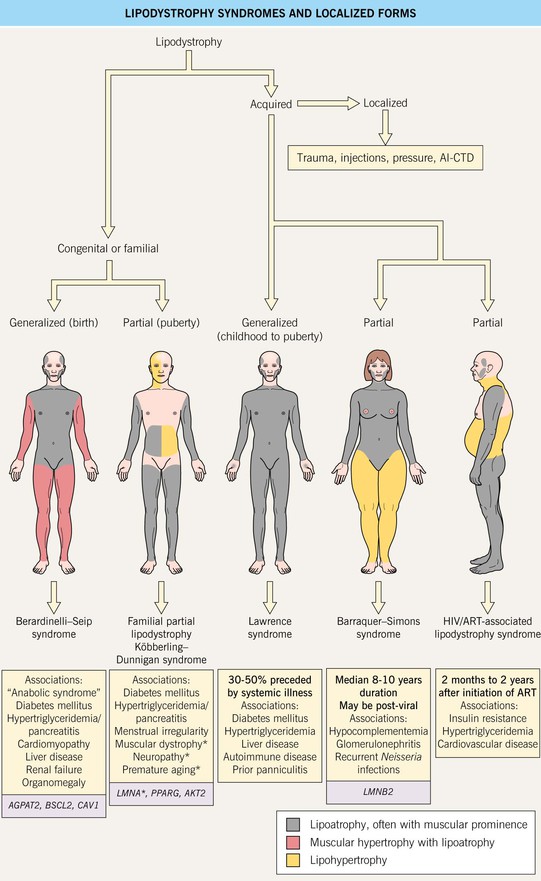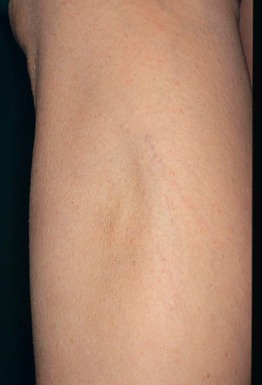84
Lipodystrophies
Key Points
• Lipodystrophy is characterized by areas of fat loss/absence (lipoatrophy), and/or fat accumulation (lipohypertrophy), with both often coexisting in the same patient; lipoatrophy can lead to the appearance of muscular hypertrophy (Fig. 84.1).

Fig. 84.1 Lipoatrophy of the lower extremities, leading to the appearance of muscular hypertrophy. Courtesy, William D. James, MD.
• Lipoatrophy may be classified as.
– Generalized, partial, or localized (Fig. 84.2).

Fig. 84.2 Lipodystrophy syndromes and localized forms. Shaded boxes include best-described underlying genetic mutations. In familial partial lipodystrophy, LMNA mutations are associated with facial lipohypertrophy and abdominal lipoatrophy while PPARG mutations are associated with abdominal lipohypertrophy.
• Localized lipoatrophy may be idiopathic or secondary to various causes, e.g. injection of medications (in particular CS), pressure (Fig. 84.3), trauma, autoimmune connective tissue disease (e.g. lupus panniculitis; Fig. 84.4), and other panniculitides due to inflammation or lymphoma.
Stay updated, free articles. Join our Telegram channel

Full access? Get Clinical Tree









